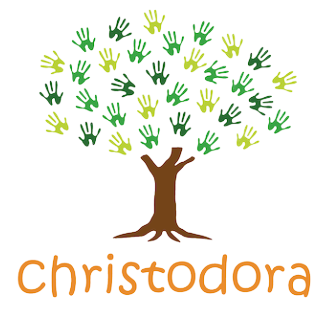Geology Walk & Stewardship in Fort Tryon Park
On a bright but windy Saturday morning, a crew of NYC students, staff, and board members gathered in Fort Tryon Park to learn about geology and help clean the park’s forest. Walking down past the beds of flowers, the group first gathered in front of Cabrini woods to listen to two Park rangers teach them about invasive species. This event was a collaboration between New York City Parks’s Department, Northern Manhattan Parks and Christodora.
Then the group all put on work gloves and chose either pruning shears or long pick-up tools. Walking into the woods, the park’s “Super Steward” Sebastian stopped the group in front of a wineberry bush. This bush is distinctive by its thorny red stems and needed to be pruned because it is harmful to the area. The ranger also pointed out Garlic Mustard, which is an invasive herb that matures fully every two years and threatens soil health by monopolizing water and nutrients.
After learning about the plant varieties harmful to the soil, the group was split into three sections: pullers, pruners, and collectors. The first section pulled all the green Garlic Mustard plants covering the ground. The students worked together to uproot this plant and discard it into trash bags. The Pruners tackled a large, thorny bush called Japanese honeysuckle as well as the wineberry bushes scattered along the path. The last group of board members and students focused on searching for trash, removing as many plastic wrappers and bottles as possible.
Then, it was time to break for lunch! The group returned all the tools and walked back up into the park. In a section of the park called the Linden Terrace, there is a beautiful view of the Hudson River, and that is where they enjoyed their food.
Once the group finished eating, Sin Senh, a geologist and Christodora board member, gave an engaging talk about the geologic time scale and local rocks after lunch. The students answered questions about how old they thought the earth was and the differences between the foundations of Manhattan and Long Island. Long Island does not have as many tall buildings because the land cannot support such heavy structures. Senh informed the group about the movements of glaciers and how they pick up sediment as they slowly move. As the earth grew warmer, a melted glacier deposited its contents in the Atlantic Ocean, forming the land mass that today we call Long Island! However, under Manhattan there is a strong bedrock consisting of Manhattan Schist, Inwood Marble, and Fordham Gneiss that do allow for skyscrapers. Senh then passed around small rocks samples of schist, marble and gneiss so the students could feel the difference in textures and see the varying colors.
Senh also shared his own story about growing up in the Bronx in the mid 80s and early 90s and how he, too, attended Christodora programs. Senh went on from Brooklyn Tech to study geology at Binghamton University and then began working at Roux Inc. As a kid, he did not imagine a career in geology for himself and did not think of the hard sciences as a possibility. As a Christodora alum, Senh encouraged the NYC students to think beyond the expected and look forward to learning and exploring all that our natural world holds.
The next free volunteer event will be held on May 11th in Crotona Park. It will be a birding walk with Chris McKenzie, Christodora board member of the Wildlife Conservation Society, and also a park clean-up service project. We at Christodora hope to see you there!













